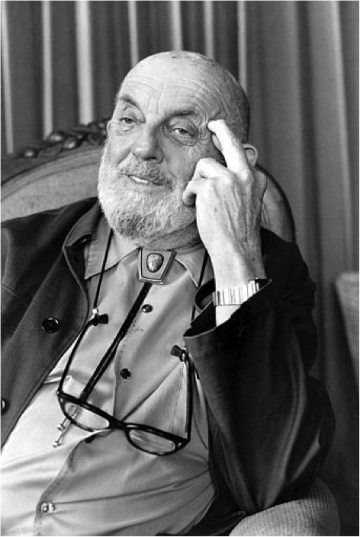
Ansel Adams
The Strength of the Shutter: Photography and the Environmental Movement
Lena Eyen was a 2016-2017 Environmental Ethics Fellow at the Markkula Center for Applied Ethics.
“Drawn to the beauty of nature’s monuments, he is regarded by environmentalists as a monument himself, and by photographers as a national institution. It is through his foresight and fortitude that so much of America has been saved for future Americans.”- President James E. Carter, presenting Ansel Adams with the Presidential Medal of Freedom [2]
During his lifetime, Ansel Adams harnessed the power of photography to capture the attention of everyday citizens, both inside and outside of the environmental realm. Adams believed he was not “influenced” by, but rather “in the tradition of,” artists such as Frederic Church and transcendentalist minds like Ralph Waldo Emerson and Henry David Thoreau [3]. Despite the number of predecessors that first blazed similar trails, Adams undoubtedly left his own imprint on the world of photography and environmental advocacy.
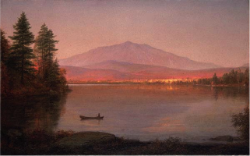
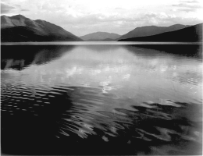
Mount Katahdin from Millinocket Camp by Frederic Church, one of Adams’ inspirations [4]. Evening, McDonald Lake, Glacier National Park (1942) [5].
During the aftershock of San Francisco’s 1906 earthquake, four year-old Ansel Adams was launched to the floor and badly broke his nose [3]. This permanent mark, coupled with a general inability to fit in with peers at school, made Ansel’s early years all but easy. At home, his father and mother (who was nearly 40 at Ansel’s birth) established a home environment that was “decidedly Victorian,” with an aire of both social and emotional conservatism [3]. In school, he struggled with what would later be attributed to dyslexia and hyperactivity. Eventually he earned what he called a “legitimizing diploma” from a private school, which equated to about an eighth grade diploma [3]. His attention and efforts shifted towards his musical pursuits, with the intention of becoming a professional pianist. The piano offered “substance, discipline, and structure to his frustrating and erratic youth” [3].
Adams’ relatively lonely childhood was compensated for by his relationship with nature. As a native San Franciscan, Adams was entranced by the Golden Gate and early trips to Yosemite, which was also when he received his first camera, the Kodak No. 1 Box Brownie, from his parents [3]. As Adams hiked, climbed, and explored the region, he also gained technical photographic skills and confidence as he began to shoot photos of the outdoors. In 1919, 27 years after its start, Adams joined the Sierra Club [3]. This association would be the launching point from which Adams’ photography career would flourish. His first published work was in the club’s 1922 bulletin, followed by his first solo exhibition at the Sierra Club’s San Francisco headquarters in 1928, the same year he married his wife Virginia Best [3].
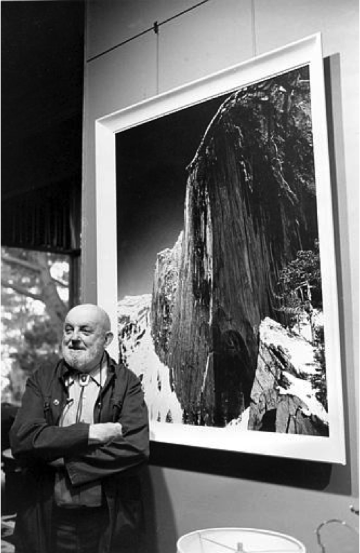
Ansel Adams standing in front of his photograph, "Monolith: The Face of Half Dome, 1927" [6].
One year prior in 1927, Adams’ breakthrough photograph “Monolith, The Face of Half Dome” featured inside of his first published portfolio [3]. The positive reception to this work ignited a number of new commercial assignments. During the same year, Adams met photographer Edward Weston, with whom he later partnered to form the renowned photography group, “f/64” [3]. The name, which stems from the specific aperture setting on a camera that provides the greatest depth of field, appropriately described the efforts of the eleven person group of artists that strived to sharply focus on the largest percentage of the picture. Additionally, the camera has the power to see “more clearly than the human eye” because it does not project personal prejudices onto the subject [7]. Meanwhile, in order to meet the financial pressures faced by an artist who preferred to spend his time exploring the outdoors, Adams took on a wide range of clients including the National Park Service, Kodak, and AT&T [3]. In 1934, Adams was elected to the Sierra Club’s Board of Directors (a position he would hold for 37 years) and had become the unofficial “artist of Sierra Nevada” and “defender of Yosemite” [3].
“It is horrifying that we have to fight our own government to save the environment” - Adams [8]
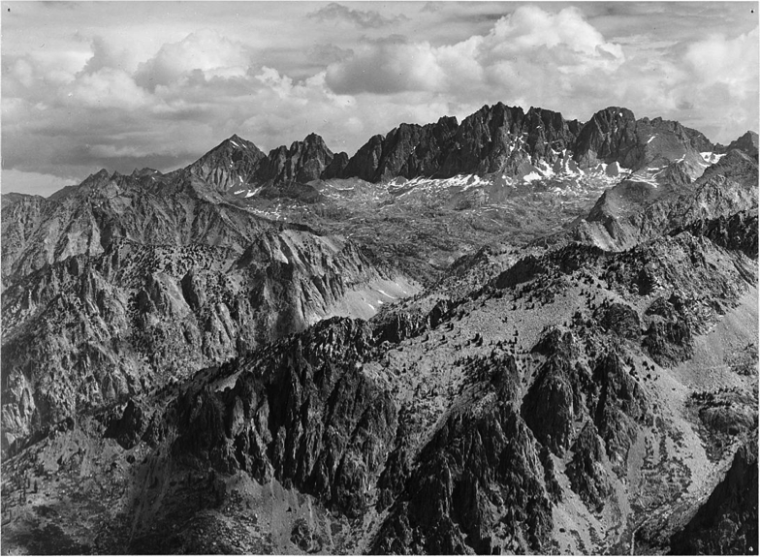 North Palisade from Windy Point (1936) [9]
North Palisade from Windy Point (1936) [9]
For the next ten years, Adams continued to develop his professional reputation and artistic style. His subject matter expanded from nature to manmade infrastructures, and he began to explore the potential impact that his art could have on social and political change [3]. While he participated in meetings and wrote letters for environmental organizations such as the Sierra Club and Wilderness Society, Adams’ most impactful contributions were undoubtedly his raw photographs of nature. When imagining the vast national parks that needed defending, people began to envision them “in terms of an Ansel Adams photograph” [3].
“What Adams ‘ pictures show us is different from what we see in any landscape photographer before him. They are concerned, it seems to me, not with the description of object—the rocks, trees, and water that are the nominal parts of his pictures—but with the description of the light that they modulate, the light that justifies their relationship to each other.” - John Szarkowski of New York‘s Museum of Modern Art [10]
The way Adams captured images was more than a mere reproduction of what he saw. Capturing highlights and shadows, empty skies and dense forests, each photo intensified and purified the actual scenes themselves [3]. Adams, like other environmentalists such as John Muir and Rachel Carson, saw the intrinsic value of nature. He explained this concept as the spiritual-emotional aspect of parks and wilderness; natural spaces are not solely practical but also provide a deeper and arguably transcendental experience that is unmatched by creations from the human hand [3]. Adams advocated for limited “resortism” and restrictions on the overdevelopment of land and infringement on endangered species [3]. In his photos, Adams sought to accentuate the “internal event” rather than just the “external event” [3].
“I am an artist who also appreciated science and engineering, and I know we can’t keep everything in a glass case—with the keys given only to a privileged few. Nevertheless, I want people to experience the magic of wildness; there is no use fooling ourselves that nature with a slick highway running through it is any longer wild….” - Adams [10]
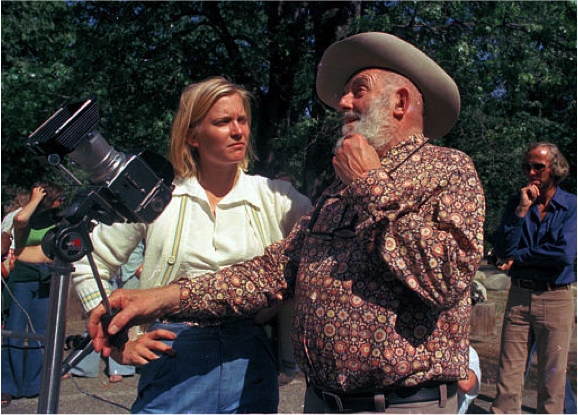
Ansel Adams teaching Susan Ford (daughter of President Gerald Ford) photography at his gallery near Yosemite [11].
In 1963, Adams received The Sierra Club’s John Muir Award, and two years later is appointed to President Lyndon Johnson’s environmental task force [11]. During this time, his work was exhibited in large galleries and museums such as the Metropolitan Museum of Art in New York. At this point in his career, one of the main aspects of his job was to produce prints of his most iconic pieces. At the same time, Adams faced the political turmoil taking place in the environmental realm. David Brower, first executive director of the Sierra Club and longtime advocate of Adams’ work, was being pushed to resign from his position due to philosophical differences. Despite having to push in favor of his resignation, the two maintained a mutual respect for the work of one another [10].
Four years after earning the Presidential Medal of Freedom in 1980, Adams died at the age of 82 in Monterey, California [3]. Few artists have had a greater impact on environmentalism than Ansel Adams. His belief in the possibility of humankind living in harmony with the environment was illuminated through his artwork and worked to strengthen other environmental efforts. Unparalleled photographic skills coupled with a deep passion for defending the integrity of the natural world made Adams one of the greatest environmental artists in American history. Today, Mount Ansel Adams sits in Yosemite Valley, immortalizing the life of one of the world’s greats.
“When words become unclear, I shall focus with photographs. When images become inadequate, I shall be content with silence.” - Ansel Adams [12]
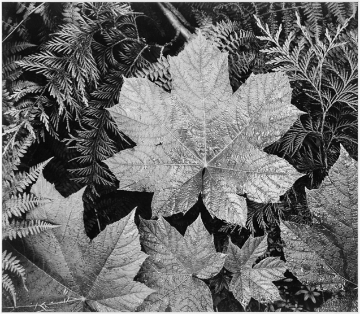
In Glacier National Park (1942). [13]
Sources
[1] AP #801202034
[2] Jimmy Carter: "Presidential Medal of Freedom Remarks at the Presentation Ceremony. ," June 9, 1980. Online by Gerhard Peters and John T. Woolley, The American Presidency Project. Web. http://www.presidency.ucsb.edu/ws/?pid=45389.
[3] Turnage, William. "Ansel Adams, Photographer - A Biography." Ansel Adams Gallery. Web. The Ansel Adams Gallery, 27 July 2016. <http://anseladams.com/ansel-adams-bio/>
[5] https://commons.wikimedia.org/wiki/File:McDonald_Lake,_Glacier_National_Park_19.jpg
[6] AP #801202043
[7] Hostetler, Lisa. "Group f/64." The Met's Heilbrunn Timeline of Art History. The Metropolitan Museum of Art, Oct. 2004. Web. http://www.metmuseum.org/toah/hd/f64/hd_f64.htm
[8] "Ansel Adams." David Sheff. N.p., 25 Oct. 2013. Web. <http://davidsheff.com/article/ansel-adams/>
[10] Turnage, Robert . "Ansel Adams - The Role of the Artist in the Environmental Movement." Ansel Adams Gallery. The Ansel Adams Gallery, 19 July 2016. Web. <http://anseladams.com/ansel-adams-the-role-of-the-artist-in-the-environmental-movement/>
[11] AP #750601021
[11] "Ansel Adams." Ansel Adams - Famous People Influenced by John Muir - John Muir Exhibit. The Sierra Club, n.d. Web. <http://vault.sierraclub.org/john_muir_exhibit/people/ansel_adams.aspx>
[12] Oden, Lori. "Ansel Adams." International Photography Hall of Fame. International Photography Hall of Fame, n.d. Web. <http://iphf.org/inductees/ansel-adams/>
Adams at his home in Carmel in 1980. [1]